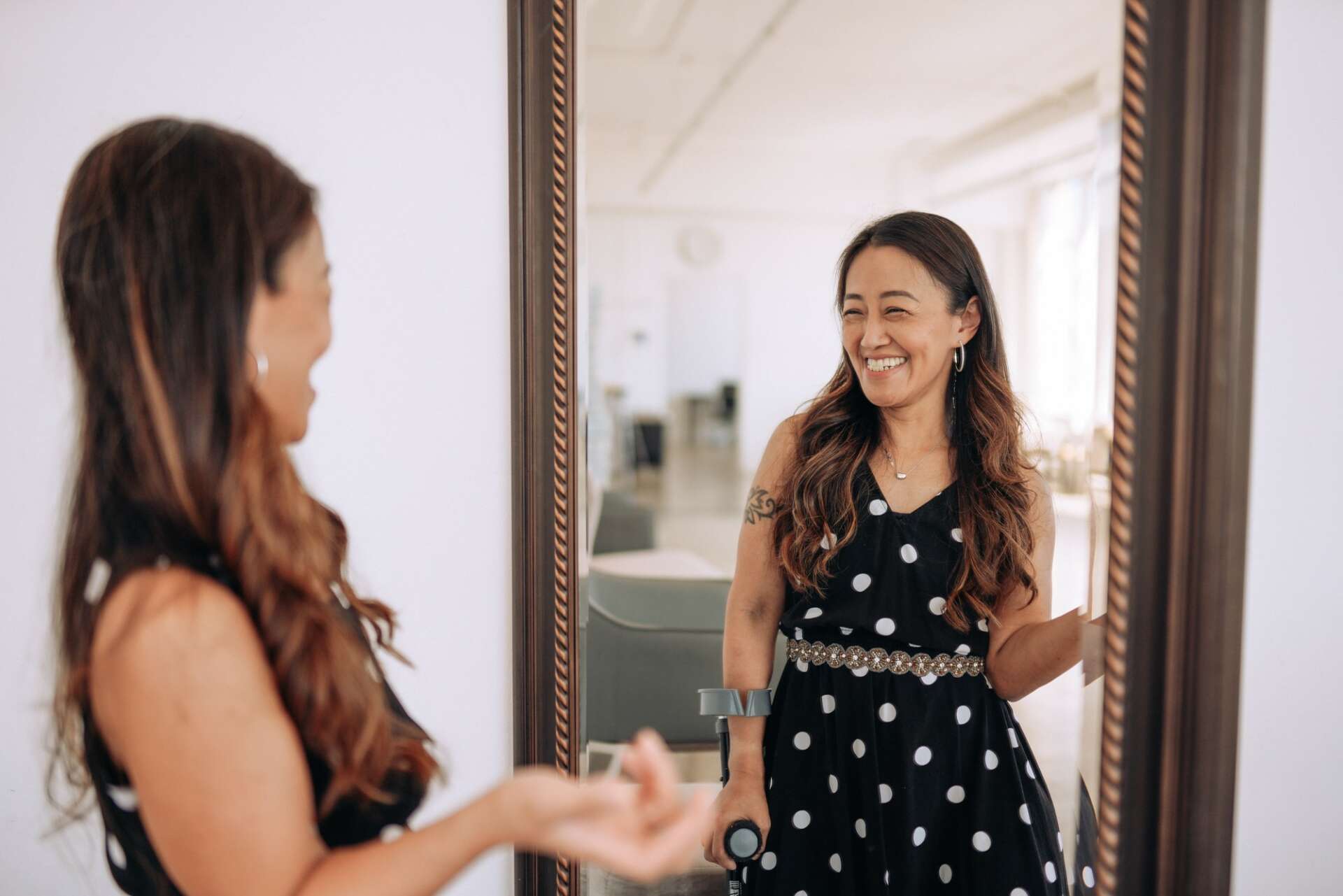We recently connected with Michelle Kuei and have shared our conversation below.
Michelle, thanks for joining us, excited to have you contributing your stories and insights. It’s easy to look at a business or industry as an outsider and assume it’s super profitable – but we’ve seen over and over again in our conversation with folks that most industries have factors that make profitability a challenge. What’s biggest challenge to profitability in your industry?
When you’re an outsider looking at the coaching industry, it is too easy to think it’s a goldmine. We hear the soaring roar success of high-profile celebrity coaches like Tony Robbin, and Brandon Burchard or perhaps with the latest Alex Hormozi with popularity dominates across major social media platforms.
While it might seem like an easy path to profitability, the reality is far more nuanced. The biggest hurdle? Getting yourself seen, or in other words, visibility.
When I wrapped up my coach certification at iPEC coaching, I was pumped and ready to change lives. But I hit a wall almost immediately. That wall? Marketing.
I had a small circle on social media, mostly friends and family, and let me tell you, posting daily selfies and inspirational quotes wasn’t getting me any paying clients. My dad was my biggest fan who would practically reshare, comment, and like every post no matter who puts it out.
It finally dawned on me that a whopping 90% of my time would be spent on marketing. It felt like staring up at a steep mountain, much like when I faced Machu Picchu on my personal development journey before I became a coach.
Now, if you’re an introvert like me, this challenge doubles.
The idea of marketing can make you squirm. It feels like you’re asking people to part with their hard-earned money, and that can be uncomfortable.
So, what’s the takeaway? Visibility is the linchpin for profitability in coaching.
It’s not just about selling; it’s about connecting, sharing your story, and building trust. And once you get past the mental block that marketing is some kind of necessary evil, you’ll find it’s actually the most powerful tool you have to build a successful coaching business.
Visibility Is Your Profitability.
This is the number one truth in any service and product industry.


Michelle, love having you share your insights with us. Before we ask you more questions, maybe you can take a moment to introduce yourself to our readers who might have missed our earlier conversations?
My story starts in an unexpected place: the driver’s seat of my car.
One day, I looked down and noticed a weird stain on my shirt. It took me a moment to realize that my belly had been rubbing against the steering wheel. That was my wake-up call, my “something has to give” moment.
So, off to the gym, I went, determined to get fit and strong.
But here’s the thing: I’ve been living with a disability since a car accident when I was 11 years old. I’ve spent most of my life playing small, staying invisible.
Then, it seemed like everyone I knew was heading off to hike Machu Picchu, and I thought, “Why not me?” So, I took on the challenge. I hiked those 26 grueling miles, bandaging my wrists to take the load off as I moved along on my crutches. My FitBit clocked in an average of 40,000 steps each day. Turning back wasn’t an option; it would’ve been more shameful than failing—or even dying—on that mountain.
Just like my climb up Machu Picchu, I didn’t start my coaching business to fail.
I started it to reach the summit, to make an impact. And if you’re wondering how to make it to the top of your own mountain, I’m here to guide you.
You see, that accident left me physically small, at 4’4″, but it also made me live emotionally small. I carried the weight of shame and unworthiness for years. But that hike changed everything. I reached the peak, crawling on my hands and knees towards the end, cheered on by people who started as strangers but became part of my journey.
When I came back, I was a different person.
The shame and doubt that had held me back were gone. I was ready to live fearlessly and help others do the same. Now, I guide people on their own journeys to becoming fearless and limitless. I help them find the courage to say “yes” to their own Machu Picchu, those intimidating challenges that too often keep them stuck.
This is my story, and it’s why I know that the biggest hurdle in coaching—or in life—isn’t just about getting fit or reaching a physical peak. It’s about visibility, about showing up in your own life, taking risks, and daring to climb your own mountains. And I’m here to show you how.

Can you share one of your favorite marketing or sales stories?
After completing the esteemed iPEC coaching program and publishing my book, “Perfectly Normal: An Immigrant’s Story of Making It in America,” I was brimming with passion and ready to make a meaningful impact. However, I faced a significant hurdle: I had no audience to share this newfound zeal with. My car trunk was stocked with books, yet I had no clients to engage with.
Determined to turn things around, I took a grassroots approach. I drove around my local area, knocking on the doors of event venues, hoping to secure a platform to share my story and expertise. Despite my fervor, the response was less than encouraging—mostly met with silence or polite declines.
One disheartening day, I returned home and took a moment for introspection. It dawned on me that succeeding in coaching isn’t just about the coaching itself; it’s about building a community. A community that not only listens but deeply resonates with your message. Launching a business without an initial audience is indeed a formidable challenge. No matter how compelling your offerings, without an audience, a consistent client base remains elusive.
What has been a game-changer for me is storytelling. I’ve always been a storyteller; in fact, we all are. We tell three kinds of stories every day: the stories we tell ourselves, the stories we share with others, and the narratives we create for our teams. I used to tell myself limiting stories, and I’ve had to explain my physical differences due to my shorter stature. Each story became a conduit for connection.
So, I thought, why not leverage this innate skill? Why not share my struggles and the lessons I’ve gleaned, in hopes of inspiring others to transform their lives?
The early stages of any endeavor are undoubtedly challenging, but they also lay the foundation for future success. The key is to persist, to continually learn, and above all, to focus on serving your audience. When you do that, you’ll find that your audience will not only discover you but will also become as passionate about your message as you are.

How did you build your audience on social media?
Building an audience on social media was one of my initial challenges when I started my coaching business. I’d post content that I was proud of, thinking it was a masterpiece, only to hear crickets. No likes, no comments, no shares. It was disheartening and triggered my inner critic and perfectionist tendencies, leading to procrastination.
The turning point came when I realized I was posting what I thought my audience wanted, rather than what they were actually interested in. Consistency is key, but it’s not just about posting regularly; it’s about posting content that resonates with your audience.
So, how did I turn things around? Here are three tips that helped me create consistent, engaging content, along with two sources for endless inspiration:
1. Plan Ahead
One of the secrets to maintaining consistency is planning. I set aside time each week to map out my content calendar. This not only ensures a steady flow of posts but also eliminates that last-minute scramble for content ideas.
2. Listen to My Avatar
Understanding your audience is key to creating content that resonates. I make it a point to listen to my avatar, my ideal client. This involves paying attention to the questions they ask, the problems they’re trying to solve, and the language they use. By tuning into their needs and preferences, I can tailor my content to provide real value, which in turn fosters engagement and loyalty.
3. Repurpose Old Content
If you’re running low on fresh ideas, don’t hesitate to revisit and repurpose old content. An overlooked blog post or a video that didn’t gain much traction initially can be updated and repackaged for a new audience.
By implementing these strategies, I’ve been able to build and maintain an engaged, loyal following on social media. It’s a continuous learning process, but the key takeaway is this: consistency and resonance are your best friends when it comes to social media success. Keep these in mind, and you’ll find that your audience will not only grow but also become more engaged and passionate about your message.


Contact Info:
- Website: http://elevatelifecoaching.org
- Instagram: http://instagram.com/elevatelifecoach
- Facebook: http://facebook.com/coachmichellekuei
- Linkedin: http://linkedin.com/in/michellekuei
- Twitter: http://twitter.com/michelle_kuei
- Youtube: http://youtube.com/michellekueispeak
Image Credits
photo by; Lauren Comes


